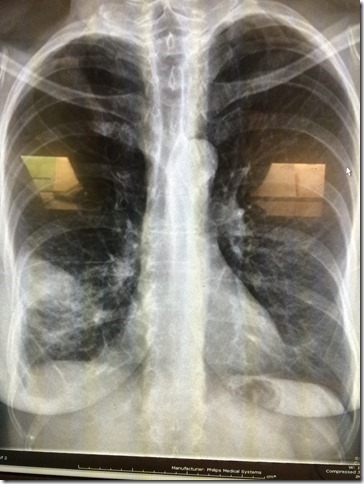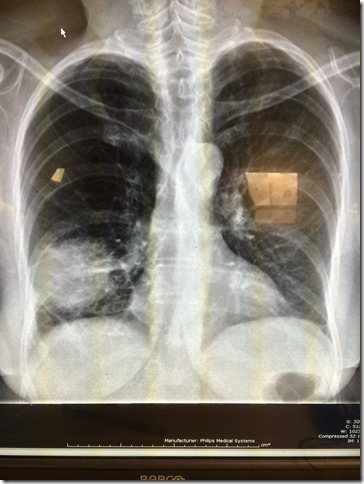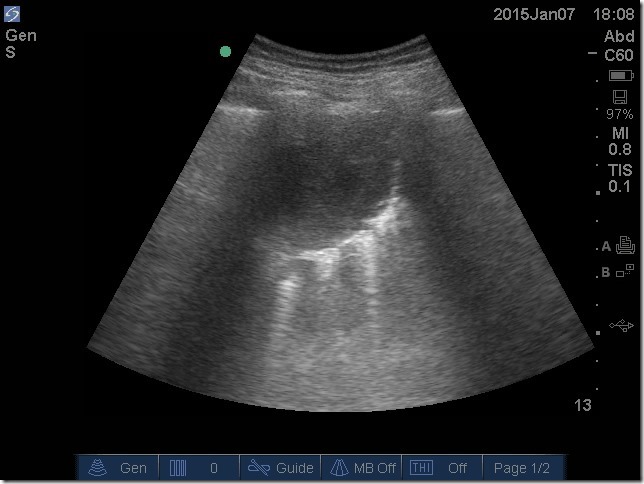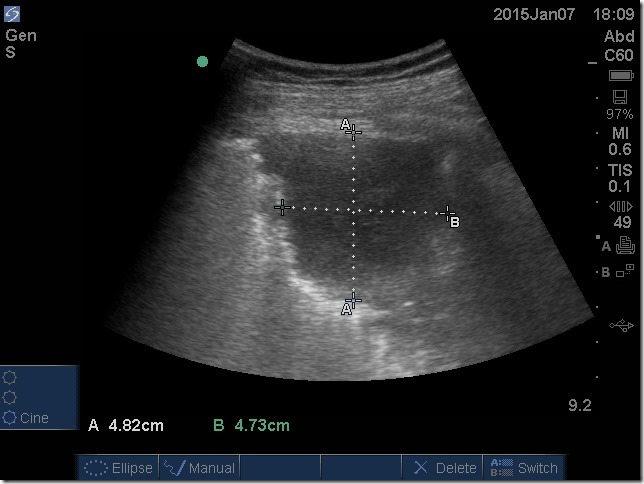Dr Richard with a pneumonia that just won’t go away!
Thoracic EDE is one of the hot topics in the POCUS world. This is Ben Ho’s chapter at EDE 2. Joel Turner (@JTMcGillEM) has presented some newer aspects at EDE 3. Here is a case from Dr Bernard Richard in Valleyfield that illustrates its utility. Incidentally , Bernard will be making his debut as an EDE 2 instructor next week in Quebec City.
From Bernard…
Back in mid-December, a 50-year-old woman presented to our emergency department with a 1 week history of fever and coughing, as well as some other flu-like symptoms. This chest x-ray was performed.
Antibiotics were prescribed. The x-ray was later interpreted by radiology as compatible with pneumonia. She improved but then got worse and came back to the emergency department 3 weeks later with the same symptoms: fever for a week, cough with purulent sputum, and dyspnea. I saw her and repeated the x-ray.
Was it a resistant pneumonia? An abscess? A mass? …..it was time for some POCUS scans! So I put the probe right on the spot where the infiltrate was seen on x-ray and found this:
So, a large hypoechoic cystic structure with some comet tail artifacts far field to it. We noted the absence of enhancement artifact which one would expect with an abscess. It also didn’t look like a lung consolidation (hepatization of the lung or liver-like appearance). At that point, we knew it was not a pneumonia, but probably a cancer. A CT scan and transthoracic biopsy confirmed our suspicion. POCUS totally changed the management of this case. Instead of wasting time by going down the wrong management path, we found the true cause right from the beginning.
I think this case show well how ultrasound can help sort out the “not-so-clean” X-rays and to nail the diagnosis earlier.
[Editor’s note: Couldn’t agree more! One other tip…most tumors are pretty vascular. If you’re not sure if you are looking at an abscess or a tumor, throw on color Doppler. Tumors usually light up, abscesses usually don’t light up.]











Good finding. It’s amazing what you can find at the bedside if you take the time to look.